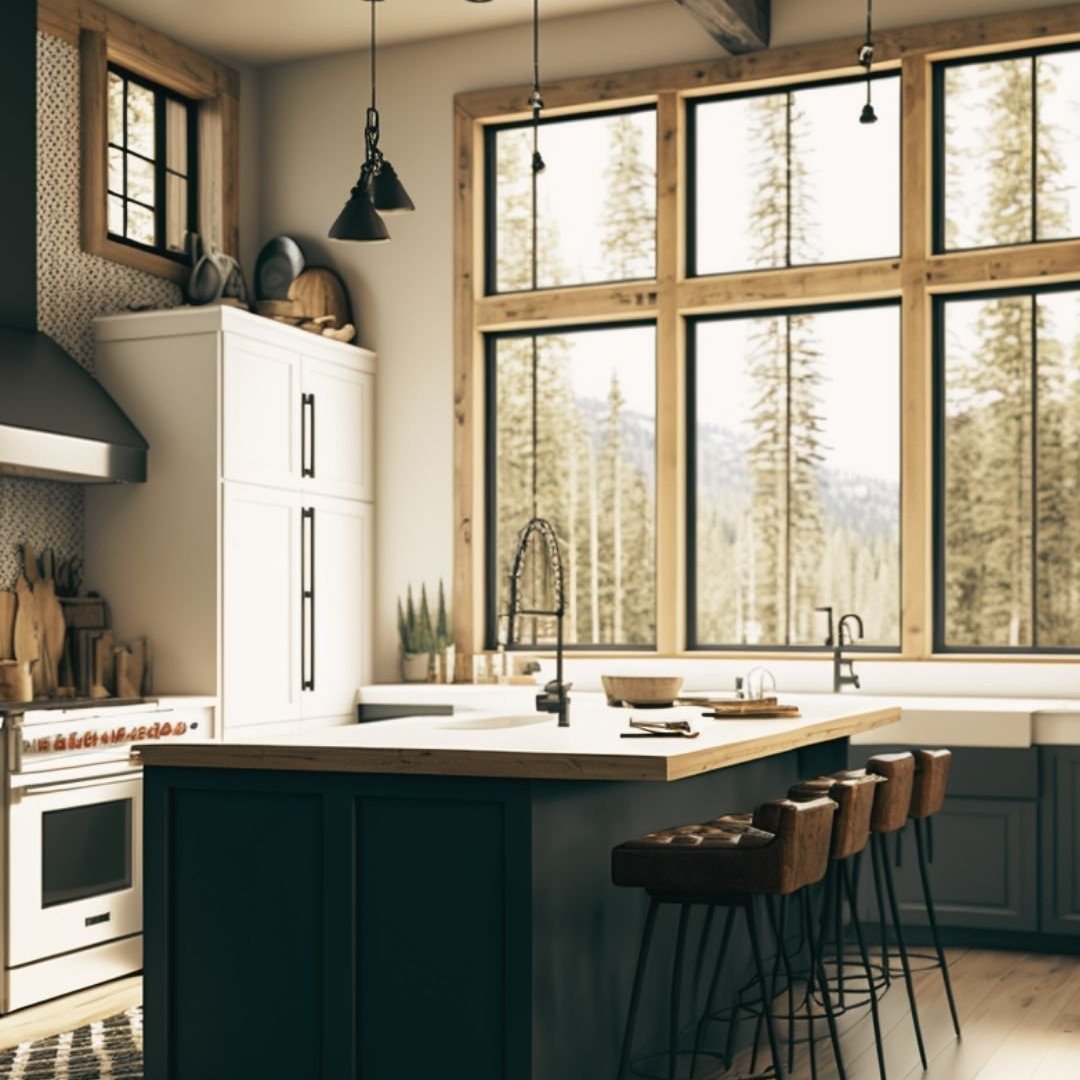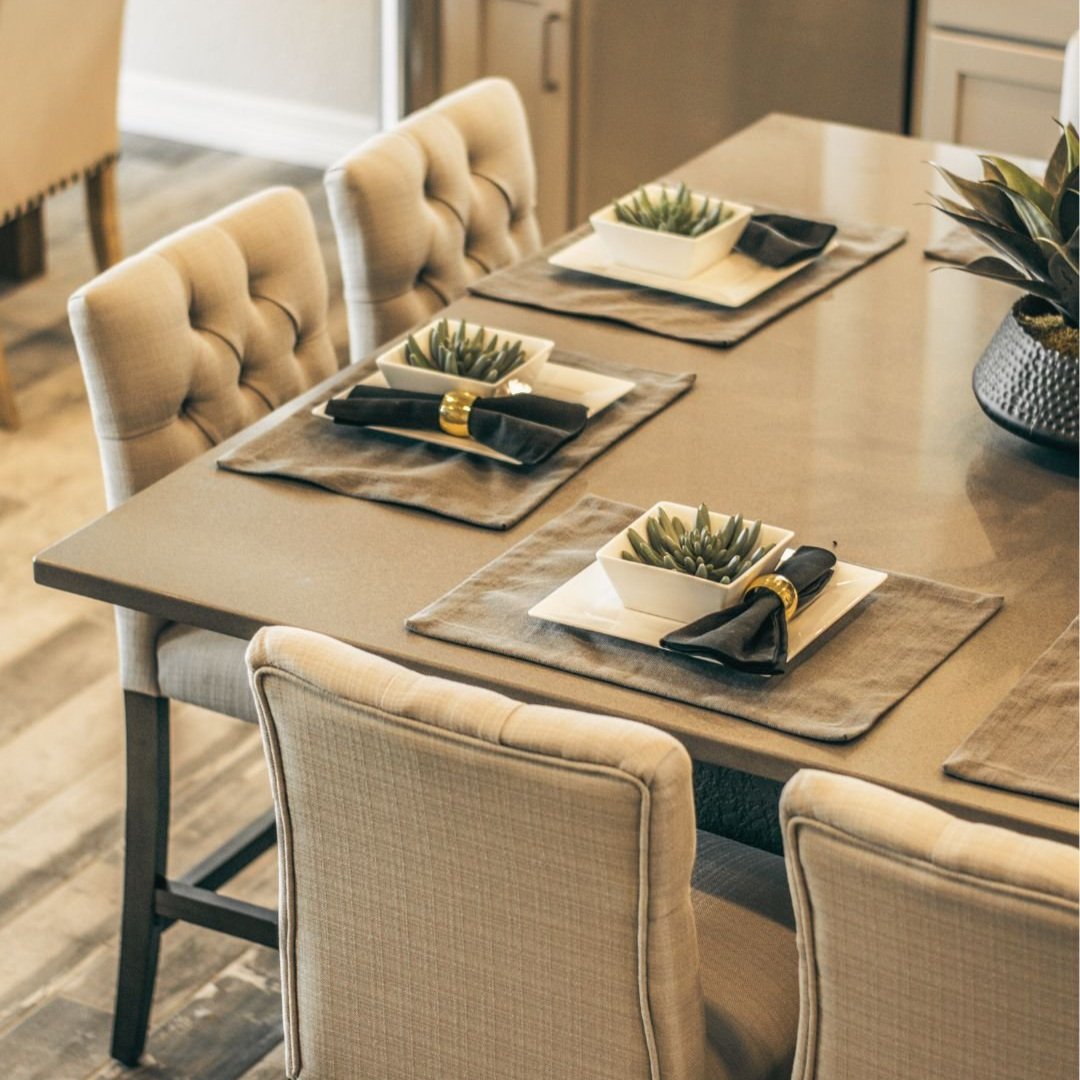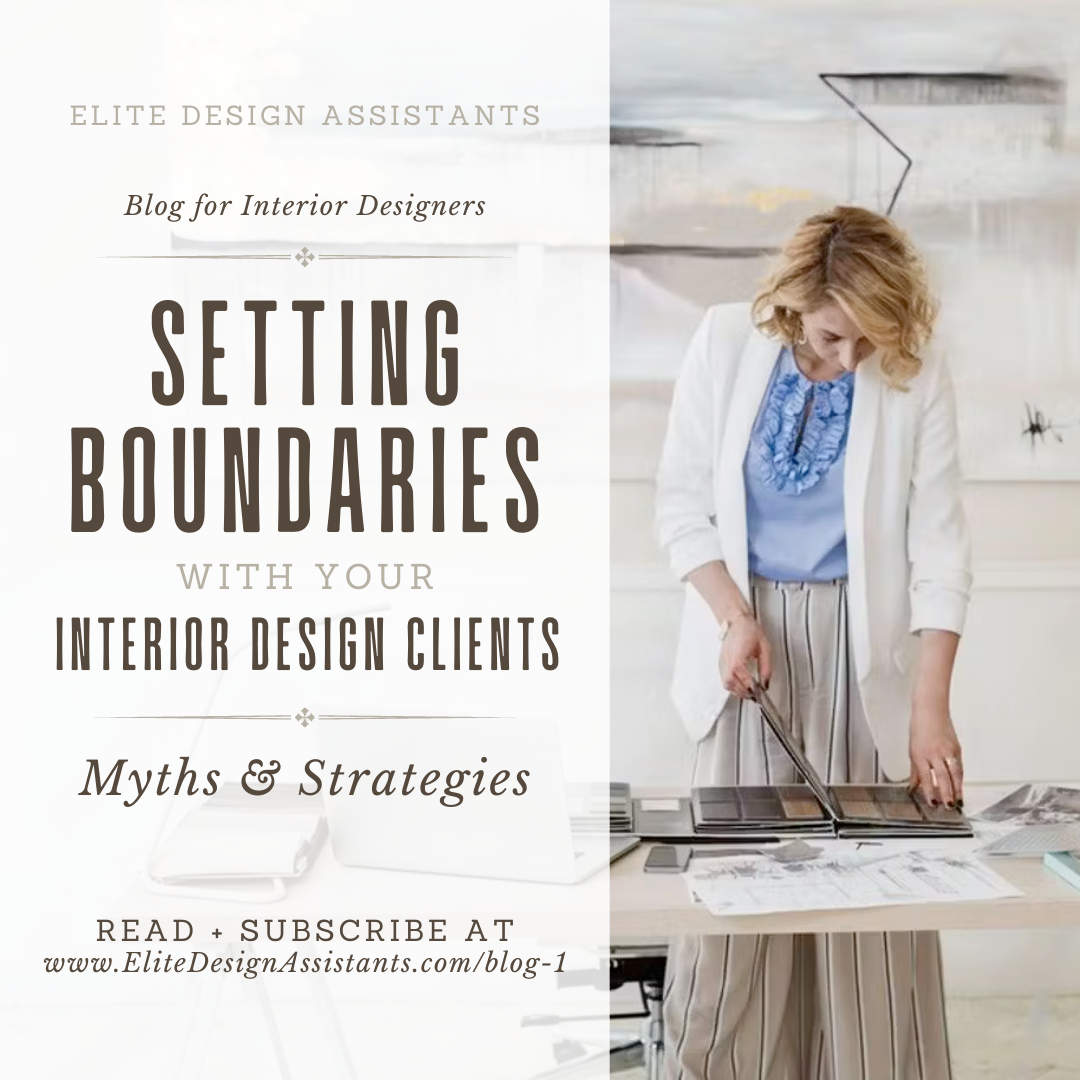Setting Boundaries with Your Interior Design Clients: Myths and Strategies
/You’re friendly, you’re responsive, and you show up for your clients. As an interior designer, these are all fantastic qualities that have likely helped you develop strong relationships with your clients. However, without proper boundaries, you may find yourself experiencing scope creep and burnout. Fortunately, there are ways to set boundaries with your clients that will ultimately benefit both you and your business. Let's explore some common myths and counterstrategies below.
Myth: You need to be available to your clients 24/7.
Reality: One of the most important boundaries to establish is how and when you can be reached. Clearly define acceptable channels of communication and schedules, and share these guidelines during the initial consultation. For example, you may want to limit written communication to email or schedule weekly check-ins via phone or video chat. Be sure to establish clear expectations and put them in writing as part of the contract. When laying out your limits, frame them in a positive way. Instead of saying, "Do NOT contact me via text message," you could say, "Our team will be happy to receive your questions via email and offer updates during our weekly check-ins."
Myth: Reasonable clients know better than to call on weekends or ask for extra favors.
Reality: While your clients are probably reasonable people, they may not be familiar with the interior design process. As such, it's your job to educate them about your policies and procedures. Don't assume that certain expectations are obvious; be explicit about them from the beginning of the project. For example, if you charge extra for revisions or changes beyond a certain point, make sure this is communicated in writing and discussed before any work begins. By stating the obvious, you can avoid misunderstandings and help your clients feel more secure about the project.
Myth: If a client makes a request outside of the agreed-upon scope, you should say no.
Reality: Well, it’s important to clarify that you can say no, especially if you don't have the capacity or desire to take on additional tasks or revisions. But can you offer a realistic alternative that works for everyone? Can you outsource certain tasks so you’re not overwhelmed by the added workload? If so, instead of simply saying no, try saying, "Yes, we can do that! However, that task falls outside of the agreed-upon scope and will come with an hourly charge. Shall we proceed?" By offering solutions rather than simply saying no, you can provide excellent service and potentially upsell your services while still keeping your scope defined and fair.
Myth: Texting back really quick on a Sunday isn’t going to eat into your free time.
Reality: If you go against your own word, you risk clients losing respect for them and expecting you to continue texting them back at all hours. It can be easy to forget that clients often feel better cared for when you are assertive and stick to your boundaries because it shows you’re confident in your experience. So avoid making exceptions or bending the rules, as this can lead to confusion. By being consistent, you will create a clear and predictable framework for the project that will help it run more smoothly.
Myth: You'll feel more relaxed if you address business matters right away.
Reality: OK, hold on. I’m not saying to let your tasks pile up beyond control, but subscribing to this belief muddles the line between work and personal life. There will always be things that need your attention, but the fact is they can wait, and it can be a tough learning process to start to accept that you have a full inbox and still stay present and engaged with your downtime activities. Set an automatic email reply if you’re worried about inquiries going unattended. But guarding your personal time is essential to avoid burnout and resentment. Besides, you’ll bring your best energy and performance to work when you rest properly and have a life outside of it.
A final note: Remember that your boundaries are your own, and you don't need to compare yourself to other designers or let anyone tell you how these things are done. Don't be afraid to assert them firmly and as many times as you need to. With clear boundaries in place, you can create a project experience that is both efficient and enjoyable for all, leaving you energized and ready to take on the next challenge.
xx, Danae




































